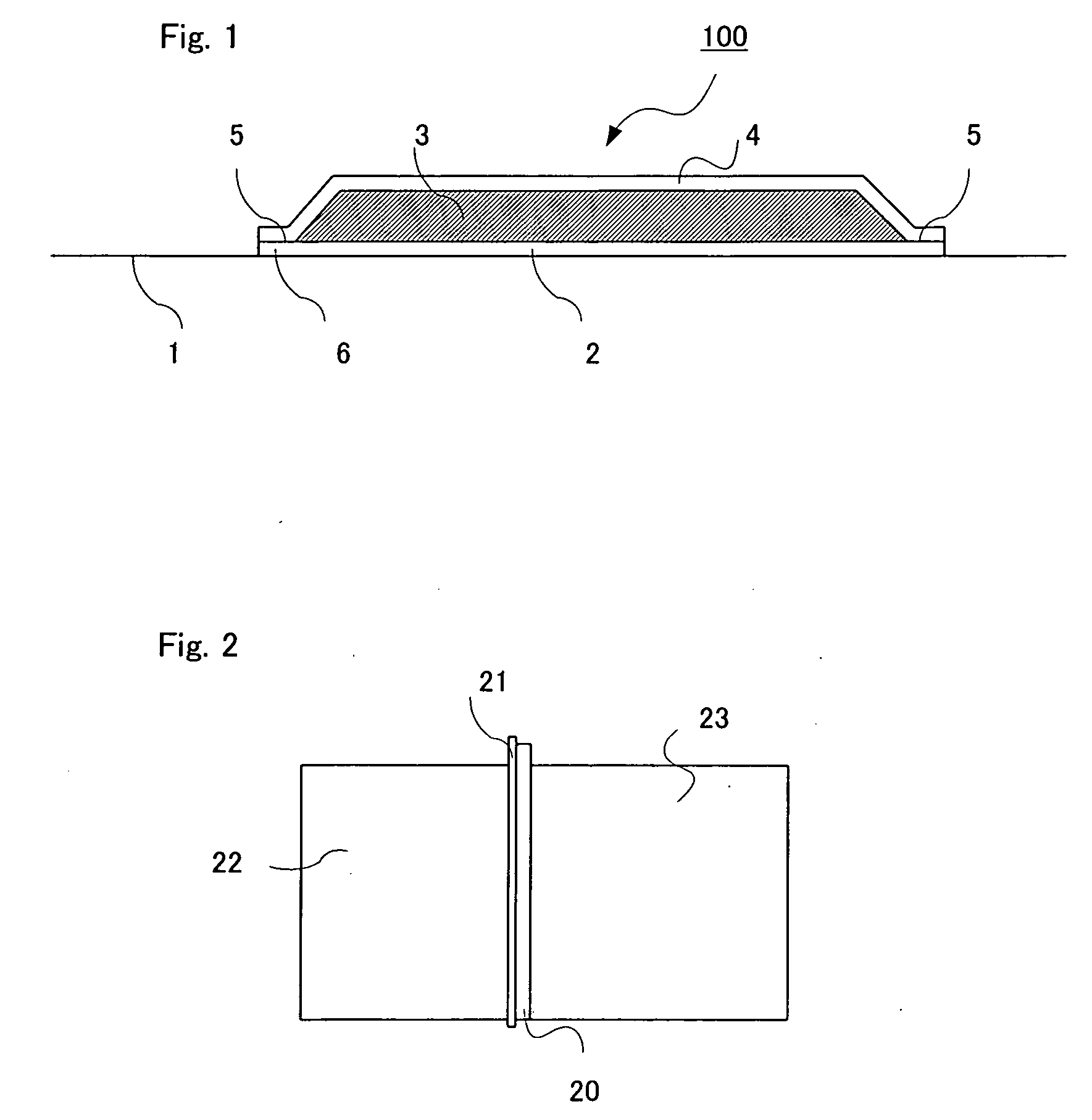Patch material for ionic medicine administration
- Summary
- Abstract
- Description
- Claims
- Application Information
AI Technical Summary
Benefits of technology
Problems solved by technology
Method used
Image
Examples
production example 1
[0093] There were prepared a monomer composition consisting of 380 g of chloromethylstyrene, 20 g of divinylbenzene and 20 g of tert-butyl peroxyethylhexanoate. 420 g of this monomer composition was placed in a 500-ml glass container. In the monomer composition was immersed a 20 cm×20 cm porous membrane (made of a polyethylene having a weight-average molecular weight of 250,000, membrane thickness=25 μm, average pore diameter=0.03 μm, void ratio=37%) at atmospheric pressure at 25° C. for 10 minutes, to impregnate the porous membrane with the monomer composition. Subsequently, the porous membrane was taken out of the monomer composition; the both sides of the membrane were covered with a polyester film of 100 μm in thickness; the covered membrane was sandwiched between two smooth stainless steel plates; and polymerization was conducted at 80° C. for 5 hours at a nitrogen pressure of 0.29 Mpa (3 kg / cm2). The resulting membrane-like material was immersed in an amination bath comprising...
production examples 2 to 5
[0095] Anion-exchange membranes were produced in the same manner as in Production Example 1 except that there were used monomer compositions and porous membranes, all shown in Table 1. The properties of the membranes obtained are shown in Table 1.
production example 6
[0096] A monomer composition shown in Table 1 was impregnated into a porous membrane in the same manner as in Production Example 1. Subsequently, the porous membrane was taken out of the monomer composition. The both sides of the membrane were covered with a polyester film of 100 μm in thickness. The covered membrane was sandwiched between two stainless steel plates. Polymerization was conducted at 45° C. for 3 hours and then at 75° C. for 5 hours, at a nitrogen pressure of 0.29 Mpa (3 kg / cm2). The resulting membrane-like material was immersed in a 1:3 (mass ratio) mixed solution of methyl iodide and n-hexane at 30° C. for 24 hours to obtain an anion-exchange membrane of quaternary pyridinium type.
[0097] The anion-exchange membrane obtained was measured for ion-exchange capacity, water content, fixed ion concentration, membrane resistance, membrane thickness and surface roughness. The results are shown in Table 1
TABLE 1Properties of ion-exchange membraneIon-Fixed ionexchangeconcen...
PUM
 Login to View More
Login to View More Abstract
Description
Claims
Application Information
 Login to View More
Login to View More - R&D
- Intellectual Property
- Life Sciences
- Materials
- Tech Scout
- Unparalleled Data Quality
- Higher Quality Content
- 60% Fewer Hallucinations
Browse by: Latest US Patents, China's latest patents, Technical Efficacy Thesaurus, Application Domain, Technology Topic, Popular Technical Reports.
© 2025 PatSnap. All rights reserved.Legal|Privacy policy|Modern Slavery Act Transparency Statement|Sitemap|About US| Contact US: help@patsnap.com


